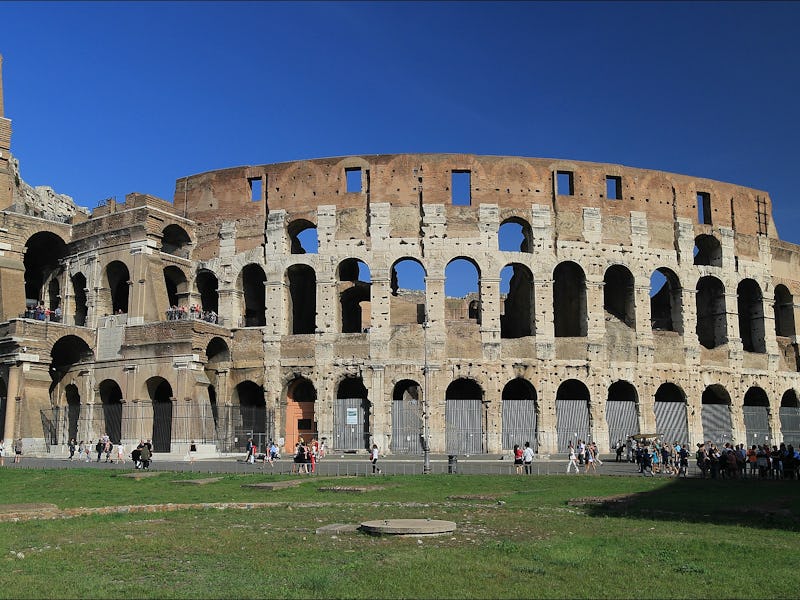MIT Team Discovers Roman Secret of Volcanic Concrete to Build Future Cities
How a waste material can be used to make a skyscraper.

Concrete is the single most used material in the world. It makes up the sidewalk you walk on every morning and the walls of the office you sit in every week.
It’s also one of the world’s primary producers of greenhouse gases, and it requires a lot of energy to produce, two very big problems for something we are so reliant on.
Researcher Oral Buyukozturk is taking a page out of Ancient Rome’s playbook. He believes that making concrete partially out of volcanic ash can, as he tells Inverse, “kill two birds with one stone” and solve the concrete conundrum. In fact, he said that it is currently possible to begin using volcanic ash to make less structurally demanding things like sidewalks, and that building skyscrapers out of the stuff is only a few years away.
“This goes back to the Romans,” Buyukozturk tells Inverse. “They used volcanic ash in their mortars when putting together bridges, building walls, and raising structures, some of which are still standing today. Ash is known to be a part of that activity, though it’s unclear how much they used and what other materials they mixed into it.”
In a paper published in the Journal of Cleaner Production, Buyukozturk and his colleagues at the Massachusetts Institute of Technology explained how they could use volcanic ash to make cement — a key ingredient in concrete.
Cement is simply a mixture of aggregates and paste. The aggregates are crushed stones like sand and gravel, while the paste is water and Portland cement. The latter is what Buyukozturk wants to use less of.
Portland cement is a combination of limestone and clay. Creating this dusty material involves blasting limestone out of quarries, transporting those rocks to mills, and then crushing them into finer particles using high temperatures. Nature essentially does that to volcanic ash already.
“Volcanic ash is a product of extreme temperatures,” says Buyukozturk. “So instead of having to process it with high temperatures, [like limestone], we can simply put this waste material to use.”
Buyukozturk does not intend to completely replace conventional Portland cement with volcanic ash. Instead, his research found that a mixture of manufactured cements and ash can yield a useful and more environmentally friendly product. According to their calculations, it takes 16 percent less energy to construct a neighborhood with 26 concrete buildings made with 50 percent volcanic ash, compared with the energy it takes to make the same structures completely of traditional Portland cement.
Seeing as concrete is the world’s most used material this would completely revolutionize the industry, save energy, and decrease the carbon footprint of manufacturing concrete.
If Buyukozturk and other scientists succeed in raising awareness about using this waste material, one that literally covers parts of the world, we could be working in offices made from the same stuff that buried Pompeii very soon.